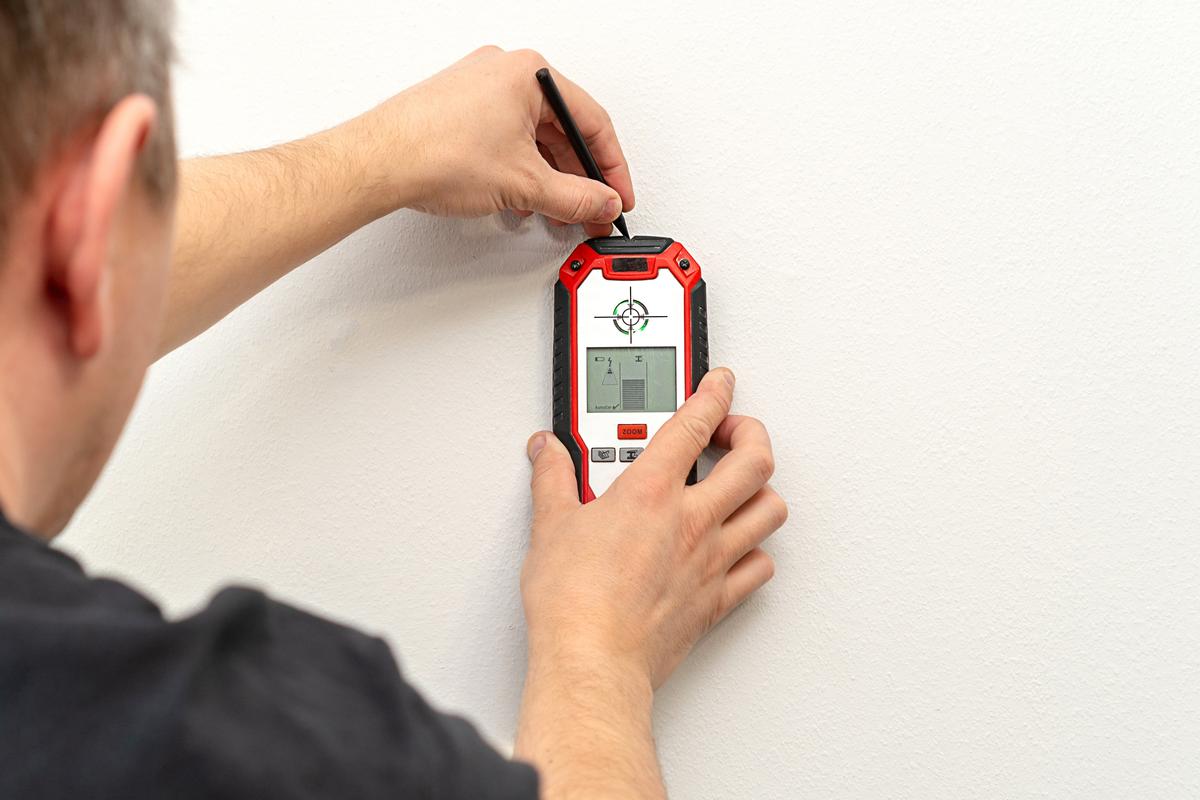Home improvement projects often demand precision and attention to detail. This is where a handy tool, such as a multifunction stud finder, becomes indispensable. A stud finder can be the difference between a successful project and a disaster waiting to happen. This article offers a comprehensive guide on everything you need to know about using a multifunction stud finder effectively. We aim to not only simplify and intensify your home improvement projects but also significantly improve your experience with the tool and eliminate the stress associated with it.
A Sneak Peek Into The Basics
As the name suggests, a stud finder, often also referred to as a stud detector or stud sensor, is a device that detects framing studs located behind the final walling surface, typically drywall. While there are different types of stud finders available, we will focus primarily on the multifunction stud finder. This is because it offers a wide range of detection capabilities, such as locating live AC wires, metal, and wood, making it a preferred choice for many users.
You might wonder why you need a stud finder in the first place. Whether you're mounting a painting, a television, or installing a new set of shelves, you need to make sure the fastener’s location correctly. And that's where a stud finder comes in – it helps determine exactly where the stud is so that you can affix fixtures securely.
Choosing Your Multifunction Stud Finder
Choosing the right multifunction stud finder can affect both the success of your project and your safety. While quality should be your number one priority, other factors to consider include price, brand reputation, and specific features such as depth range, mode options, and screen type (display). The average price range for a good quality multifunction stud finder falls between $25 and $50. However, if you’re looking for a top-of-the-line model with advanced features, be prepared to invest more.
Understanding Your Multifunction Stud Finder
Your multifunction stud finder is composed of a few key components, including a screen display, sensor, and buttons to toggle between various modes. The sensor scans and detects changes in density in the wall, while the screen display indicates the location of these detected objects. Becoming familiar with each component and its function will help you use the tool more efficiently.
Mastering The Multifunction Stud Finder: A Step-By-Step Guide
Using your multifunction stud finder requires a bit of strategy and lots of practice. Start by ensuring the surface is smooth and clean before starting to scan. Calibration is the next crucial step and depending on your model, this is can be done automatically or manually. Once your tool is calibrated, gently glide it along the surface allowing sufficient time for the device to process the changes in wall density. The screen display or indicator lights will provide information about what is lying beneath the surface of the wall.
Pro Tips For Using Your Multifunction Stud Finder
Here are some hacks to get the most out of your multifunction stud finder. Always remember to scan in both directions. This cross-referencing technique will give you a more precise depiction of what's behind the wall. And don’t forget to always check for electrical wires before drilling into any wall, the last thing you want is to hit a live wire.
The Dos And Don'ts Of Using A Multifunction Stud Finder
While these tools are fairly intuitive, there are some dos and don'ts that you should be aware of. Always remove wall decorations before scanning and don’t press too hard or move too quickly as this might result in inaccurate readings. Remember safety should always come first when using any tool.
Comparing Different Brands Of Multifunction Stud Finders
Several brands manufacture multifunction stud finders, each with its own advantages and disadvantages. Some of the popular brands include Bosch, DeWalt, and Zircon. Factors such as depth range, display quality, and brand credibility should influence your purchase decision.
The Role Of Multifunction Stud Finder In Diy Home Improvements
The value of a multifunction stud finder in DIY home improvement cannot be overemphasized. It aids in properly aligning shelves, securely mounting TVs, and safely installing lighting fixtures amongst many other applications. You will find that a multifunction stud finder is an indispensable tool for DIY enthusiasts.
Conclusion
Mastering the use of a multifunction stud finder can greatly simplify your home improvement projects while ensuring safety and precision. From understanding the basics to choosing the right product and using it effectively, this guide aims to provide you with all the crucial information to make the most of your tool. We encourage you to leave comments and ask questions.
Are You a Professional?
Requests for your services are coming in left and right. Let’s connect and grow your business, together.


